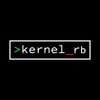What is a virtual machine (VM)? In essence, it is a virtual computer. It is a piece of software that behaves like its own computer. Users can choose to grant or restrict access to any hardware in the machine to the VM. Multiple virtual machines may be installed on a single machine as long as the system's hardware can support it.
What does this mean for development or computer use in general? Well, not much for the average consumer, but for those who are seeking to experience a different environment than Windows or Mac OS, it can mean the ability to taste operating system freedom; and break out of the chains Microsoft and Apple have bound the user in by getting a taste of Linux inside of a VM. This allows the user to get a taste of what a Linux operating system is like without completely leaving their comfort zone behind. Admittedly, for Mac web developers, this may not offer the same benefits it would a Windows user. With many windows developers relying on the Windows Subsystem for Linux (WSL) and the constant possibility for an OS update to break support, peering over the fence into Linux land might be worth the effort. Once you have chosen what distribution of Linux to install (popular versions are: Ubuntu, Mint, POP OS), you can begin creating your virtual machine.
How to Install VM on Windows 10:
In order to start this off, you need to enable Hyper V on windows.
To do so, click start and in the search bar, type: "Turn Windows Features On or Off"
Inside the menu scroll down and make sure the box for Hyper-V is checked. If not, click the box and restart the computer when prompted.
Search for and open Hyper-V and select "Quick Create"
At this point, if you have not chosen what flavor of Linux to use, Windows will offer you a couple by default from the quick create menu. Otherwise, point it to the image file you've chosen. I chose to install an image that was not listed. I chose POP OS
From this point on, many of the prompts are self explanatory or automatic. You will reach a screen that offers two options: Connect OR edit settings. Choose connect and a new window will open. Press start and wait for the VM to load.
Many of the prompts are self explanatory (location, time of day, keyboard language, etc.). One prompt that may throw users for a loop is the prompt for choosing installation style. Pop OS offers "clean install" or "custom install" If you are unsure or do not know what you are doing, choose "clean install." This installs it to the default drive with default settings and overwrites anything that previously existed. Since this is a brand new VM using a virtual drive, no data will be lost or overwritten with a clean install.
Finished!
Congratulations you've successfully installed your first VM inside Windows 10. From here, follow the first time setup prompts like you would for any other machine and start to explore your new environment. If you end up falling in love with Linux, you can choose to install it on bare-metal so it can run as your main OS instead. If you do not enjoy the distribution of Linux you've chosen, delete the virtual machine and try a different one!












Top comments (0)